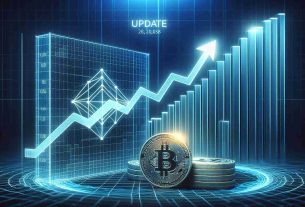Despite fluctuating economic indicators, the Federal Reserve has decided to keep interest rates steady at approximately 5.3%, a height not seen since 2001. This decision unfolds under the leadership of Federal Reserve Chair Jerome Powell, who hinted at the potential for rate cuts towards the end of the year, albeit not before autumn.
The move to hold the rates steady is the topic of some contention. The idea of an interest rate reduction has garnered attention given the impact of a 20% increase in prices since the current presidential administration took office. This increase has notably contributed to the economic concerns that could affect the upcoming re-election campaign, despite wages outpacing prices over the last two years.
The driving force behind the Fed’s tactic is to staunch inflation. Yet, the effectiveness of this approach stands questioned as economic anxiety among voters persists. Recent reports provide contradictory signals; although the Consumer Price Index showed a slight slowdown in inflation and job and wage growth appeared strong, the broader picture painted by the first-quarter GDP growth, the rise in the unemployment rate, and a plateau in price rises on a monthly basis suggest that the economic climate may not be as robust as surface figures imply.
European and other central banks have opted to reduce rates to fend off recession, drawing a contrast with the Fed’s strategy. Critics argue that the Federal Reserve’s reliance on high interest rates as a deterrent to inflation might do more harm than good. For the less wealthy who cannot effortlessly clear credit card debts or who seek to transition out of their first homes, higher interest rates compound fiscal struggles.
Observers speculate on the inequity and inefficiencies of rate hikes, particularly when inflation is largely driven by factors such as supply chain disruptions and corporate profit margins, the latter accounting for a significant slice of the inflationary pie, according to some analyses.
As the Fed maintains its independent stance, distanced from political influence, the true cost of its policies weighs heavily on American households. While the central bank aims to preserve economic stability, the path it has chosen remains fraught with potential pitfalls for the very people it seeks to protect.
Key Questions and Answers:
– Why is the Federal Reserve keeping interest rates steady amidst inflationary pressures?
The Federal Reserve is keeping interest rates steady to control inflation. The objective is to stabilize prices without triggering a recession. High interest rates can help reduce consumer spending, which in turn can slow inflation.
– What challenges are associated with this decision?
The primary challenge is finding the right balance where interest rates are high enough to dampen inflation but not so high that they significantly slow economic growth or cause a recession. There is also a concern that sustained high-interest rates disproportionately affect lower and middle-income individuals who rely more on borrowing.
– What are the controversies surrounding this topic?
Some analysts argue that the Fed’s reliance on interest rates is inadequate to address inflationary pressures caused by factors beyond consumer demand, such as supply chain issues and corporate pricing power. There is also debate over how much political considerations should influence Fed decisions.
Advantages and Disadvantages:
– Advantages:
Keeping interest rates steady can provide a stable economic environment for businesses and investors. It indicates a commitment to fighting inflation, which can help maintain the purchasing power of the currency.
– Disadvantages:
Steady high-interest rates can increase the cost of borrowing for consumers and businesses, which can lead to reduced spending and investment. They can also contribute to higher unemployment rates and economic slowdown.
Related Links:
For more information about the Federal Reserve and its impact on the economy, one may visit the central bank’s official website at Federal Reserve.
To stay updated on economic indicators like the Consumer Price Index, visit the U.S. Bureau of Labor Statistics at BLS.
Important to note is that economic data and indicators are frequently updated, which may impact the Federal Reserve’s strategy and decisions moving forward. As situations change rapidly, continuous monitoring of official sources and announcements from the Federal Reserve is advisable for the most current perspective on their policies and the impact on inflation and the economy.



